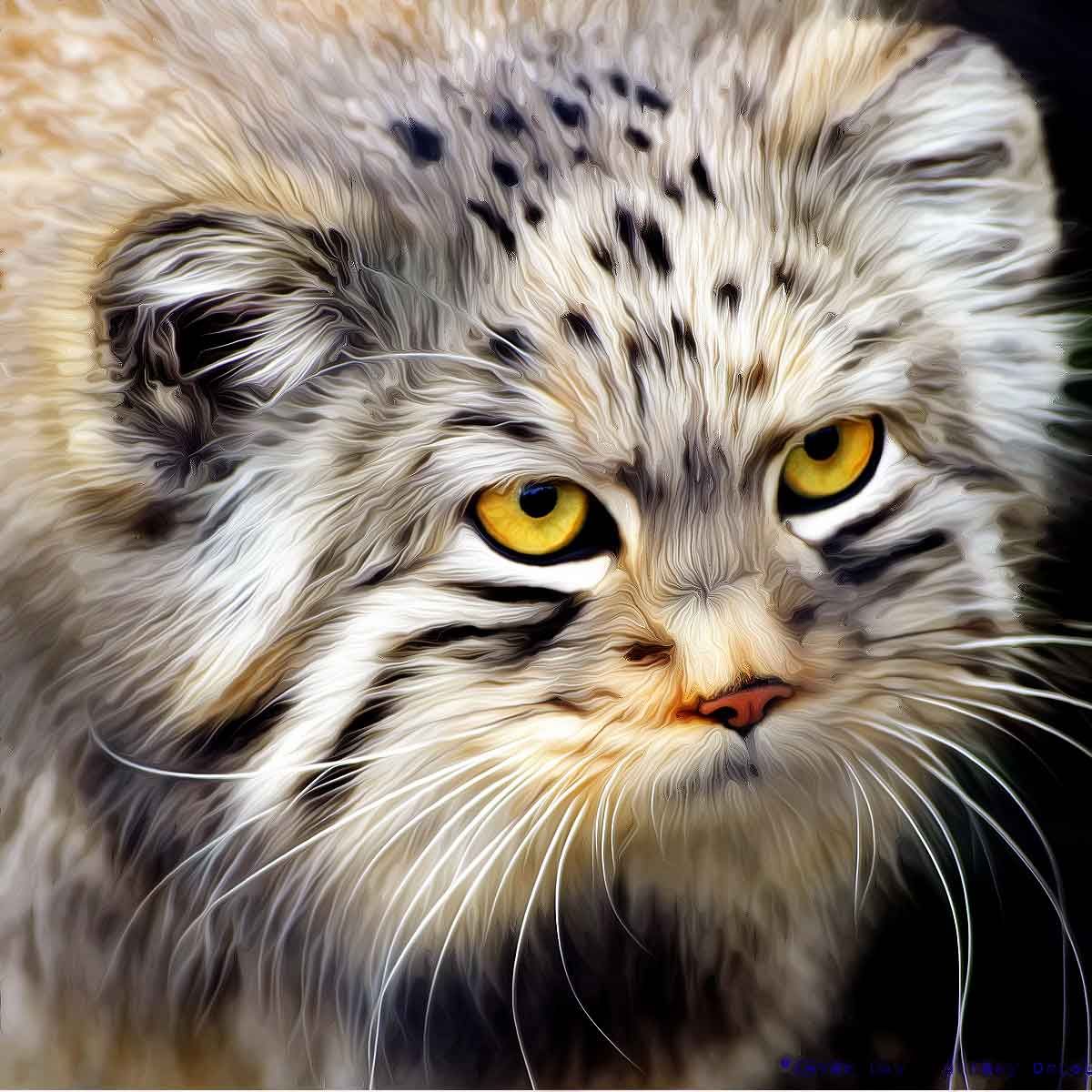More Coverage
Twitter Coverage
Satyaagrah
Written on
Satyaagrah
Written on
Satyaagrah
Written on
Satyaagrah
Written on
Satyaagrah
Written on
JOIN SATYAAGRAH SOCIAL MEDIA
“The soul is stronger than its surroundings”: Breaking news: Scientists found proof of Pallas’s cat there in Nepal’s Sagarmatha National Park on the world’s highest mountain, Mt. Everest that brings to mind one of the most inhospitable places on the earth

The world’s highest mountain, Mt. Everest, brings to mind one of the most inhospitable places on the earth. Now breaking news in Cat News reveals that scientists have found proof of Pallas’s cat there in Nepal’s Sagarmatha National Park.
|
In 2019, from April 7 to May 2, scientists from eight countries explored this region as part of the project called the National Geographic and Rolex Perpetual Planet Everest Expedition. Led by Dr. Tracie Seimon of the Wildlife Conservation Society, they collected environmental samples from SNP.
The genetic analysis of these samples revealed that there were at least two Pallas cats inhabiting Mt. Everest. DNA of Pika, a small mountain-dwelling mammal, and mountain weasel, also a mammal, were found in the samples, and these animals for a vital part of the diet of these cats.
Sharing details about the find, Dr. Seimon said: “It is phenomenal to discover proof of this rare and remarkable species at the top of the world. The discovery of Pallas’s cat on Everest illuminates the rich biodiversity of this remote high-alpine ecosystem and extends the known range of this species to eastern Nepal.”
Named in honor of Peter Simon Pallas, the scientist who described this species in 1776, this species is found across the grasslands in Asia with the majority of its range falling in Russia and Mongolia.
A very distinctive-looking felid, it has short legs, a stocky and compact build, and long fur. Its underparts have hair that is twice as long as on the top and sides, keeping it warm in very cold conditions, a typical attribute of its habitat.
With this discovery, a new species gets added to the list of known mammals in SNP, a protected World Heritage site. Pallas’s cat is protected under the Convention on International Trade in Endangered Species of Wild Fauna and Flora.
Further study is required to know more about this cat’s range, density, population, and diet.
|
The Creature Feature: 10 Fun Facts About the Pallas' Cat
The Pallas' cat (Otocolobus manul) is a small wildcat known for its unusual, and adorable, look: a flattened and rounded face, stocky build, and super fluffiness make it appear stout and plush.
But they're more than just pretty faces. Read on to find out what else makes the Pallas' cat truly awesome.
The Pallas' cat also goes by the name manul. German naturalist Peter Pallas originally classified the cat as Felis manul in 1776. The word 'manul' has its roots in the Mongolian language. Its current scientific name, Otocolobus, comes from the Greek language and can be translated to 'ugly-eared.' When Pallas first described the cat, he erroneously suggested it was the ancestor of the domestic Persian breed because of its long fur, stout build, and flattened face.
All that fluff creates the illusion of size. Pallas' cats appear to be bigger and heavier than they actually are due to their stocky builds and long, dense coats. In reality, they're about the size of domestic cats: they measure up to 26 inches in body length (with an 8-12 inch tail) and weigh only around 10 pounds.
They have unusual pupils. Unlike other cats, the pupils of Pallas' cats contract into small circles rather than vertical slits.
Pallas' cats are particular about their habitat. They live throughout central Asia, from western Iran to western China. Within this range, Pallas' cats prefer the cold and arid environments of rocky steppes and grasslands at elevations up to about 15,000 feet.
Pallas' cats have the longest and densest fur of any cat. Their fur is nearly twice as long on their belly and tail as on their top and sides. Presumably, this helps keep the cats warm as they hunt on snow or frozen ground. The length and density of their fur also change seasonally, growing longer and heavier in the winter.
Pallas' cats go through two major color phases. In the winter, their coats are grayer and more uniform in color, while in the summer they have more stripes and ochre colors in their fur. They have black rings on their tails, scattered black spots on their foreheads, and dark stripes running from their eyes down their cheeks. The frosted, silvery appearance of their coats is due to the white tips of their hairs.
Pallas' cats are loners. They are solitary and territorial, with both males and females scent-marking territories of about two to three miles. Pallas' cats spend their days in caves, crevices, and burrows made by other animals, emerging toward dusk to hunt.
They have an extremely short mating season. Female Pallas' cats are in estrus for only 26 to 42 hours, a shorter period than most cats. Mating occurs in February and March and females give birth to a litter of two to six kittens in April and May. By four months old, the kittens begin hunting with their mother, and they reach adult size by six months. They're ready to breed at the age of ten to eleven months.
Pallas' cats are ambush hunters. They stalk their prey using short vegetation and rocky terrain for cover, or sometimes wait at entrances to burrows and pounce when their inhabitants exit. Pallas' cats prey mainly upon pikas as well as other small rodents, birds, and the occasional insect.
They're poor runners. The Pallas' cat's compact body makes it a poor runner. When chased, it seeks refuge on boulders or in small crevasses.
Pallas' cats make a variety of sounds. They yelp or growl when excited, making a sound similar to a small dog. Pallas' cats can also purr.
References:
 Support Us
Support Us
Satyagraha was born from the heart of our land, with an undying aim to unveil the true essence of Bharat. It seeks to illuminate the hidden tales of our valiant freedom fighters and the rich chronicles that haven't yet sung their complete melody in the mainstream.
While platforms like NDTV and 'The Wire' effortlessly garner funds under the banner of safeguarding democracy, we at Satyagraha walk a different path. Our strength and resonance come from you. In this journey to weave a stronger Bharat, every little contribution amplifies our voice. Let's come together, contribute as you can, and champion the true spirit of our nation.
 |  |  |
| ICICI Bank of Satyaagrah | Razorpay Bank of Satyaagrah | PayPal Bank of Satyaagrah - For International Payments |
If all above doesn't work, then try the LINK below:
Please share the article on other platforms
DISCLAIMER: The author is solely responsible for the views expressed in this article. The author carries the responsibility for citing and/or licensing of images utilized within the text. The website also frequently uses non-commercial images for representational purposes only in line with the article. We are not responsible for the authenticity of such images. If some images have a copyright issue, we request the person/entity to contact us at This email address is being protected from spambots. You need JavaScript enabled to view it. and we will take the necessary actions to resolve the issue.
Related Articles
- “There’s only one way to tackle life, enjoy a day at beach, and jump into a Great Lake: Headfirst!”: 'LAKES' to 'LAYOUT', how lake areas transformed into residential & commercial entities, educational institutes, bus stands, stadiums etc. and at what cost
- In a heartfelt farewell, Corbett Tiger Reserve Park says goodbye to Gomti, the devoted elephant, and Brandy, the faithful German Shepherd, their retirement tugs at heartstrings, reminding all of the deep bonds formed over years of dedicated service
- “Kerala is superbly seen from a saddle, or with a paddle. No hour of life is wasted there”: Alleppey, also known as Alappuzha, a picturesque town of #Kerala famous for its backwaters and serene beauty has fascinated tourists for its floating houses
- "Each species is a masterpiece, a creation assembled with extreme care & genius": Ghost of the mountains | Snow Leopard, one of the most agile hunters on earth is an elusive mammal species of cat family, top-predator of Central Asia & Indian Himalaya
- “By discovering nature, you discover yourself”: Guide Anuradha Rao at Ross Island interacts with Animals, People from all over the world come to witness it, She is also one of the lucky survivors of the tsunami that devastated Andaman & Nicobar in 2004
- “You need mountains, long staircases don’t make good hikers”: Kalavantin Durg - one of the steepest fortresses in Maharashtra 2,300 feet high trek up this fort is called ‘Climb to Heaven’ because it involves rugged terrain & climbing narrow rock-cut steps
- "Look deep into nature, then you will understand everything better": Malabar giant squirrel (also known as shekru), an all-natural technicolor coat endemic to India, stretch as much as 3 feet long—longer than eastern gray squirrel & svelter counterparts
- "The reward for work well done is the opportunity to do more": Patayat Sahu, from Kalahandi spent his entire life making an astonishing garden of 3000 medicinal plants and catalogued them in two illustrated volumes, this year’s recipient of Padma Shri
- “An animal’s eyes have the power to speak a great language”: Rare Himalayan Lynx found in Ladakh region of India, they occur throughout northern slopes of Himalayas and has been reported both from thick scrub woodland & barren, rocky areas above tree line
- “Someone is sitting in the shade today because someone planted a tree a long time ago”: Great banyan tree in Kolkata's Botanical Garden is world's widest tree with 3600 aerial roots spread in 156000 sqfeet area gives an impression of thick patch of forest
- “If you would know strength & patience, welcome the company of trees”: “Trees for Wealth” - first-of-its-kind movement to bring about a revolution in the local economy & has envisioned State as the ‘Fruit Hub of India' by planting 1 billion fruit trees
- "Where snakes are family, fear sheds its skin": Maharashtra, in Shetpal village cobras roam freely amongst residents, a unique testament to India's deep-rooted harmony with nature, challenging perceptions and captivating visitors with its serpentine charm
- “You can’t make a zebra by painting stripes on a horse”: Deep in the heart of Congo is a curious creature bit like a horse, a bit like a giraffe "Okapi", an artiodactyl mammal that is endemic to Africa, the Okapi is to the Congo what the Panda is to China
- "There is no index of character so sure as the voice": Pahadi Mayna of Chhattisgarh reproduce an exact pronunciation as humans at times, it begin to learn human speech sounds under social relationships, for bird to talk you must intrude on its social life
- "And Freya the walrus, you slept your last because we loved you too much": Freya killed by Norwegian authorities after becoming a victim of her own popularity, 1320-pound female walrus was put down as an assessment concluded threat to human safety"




























